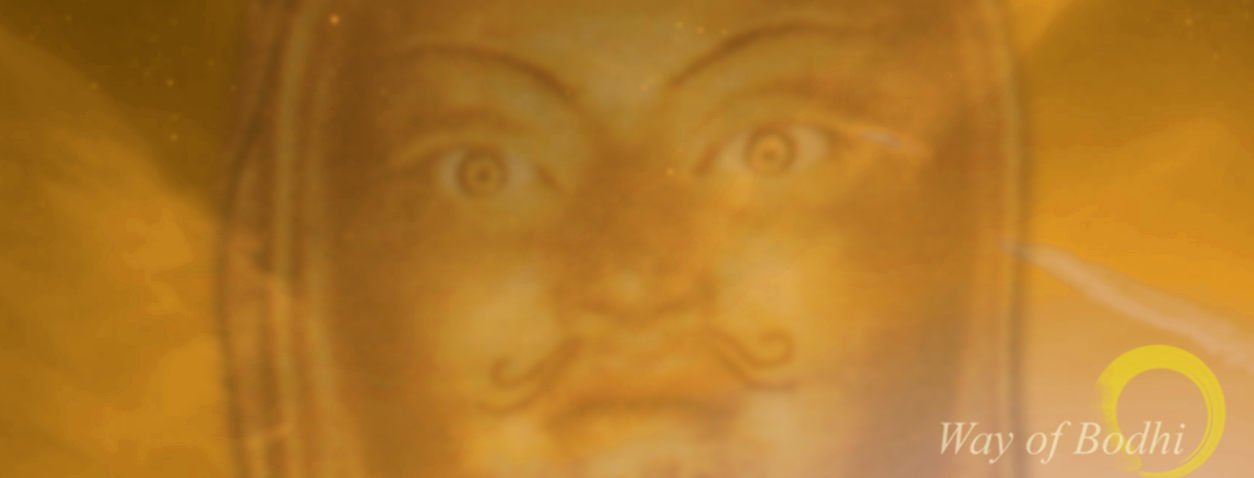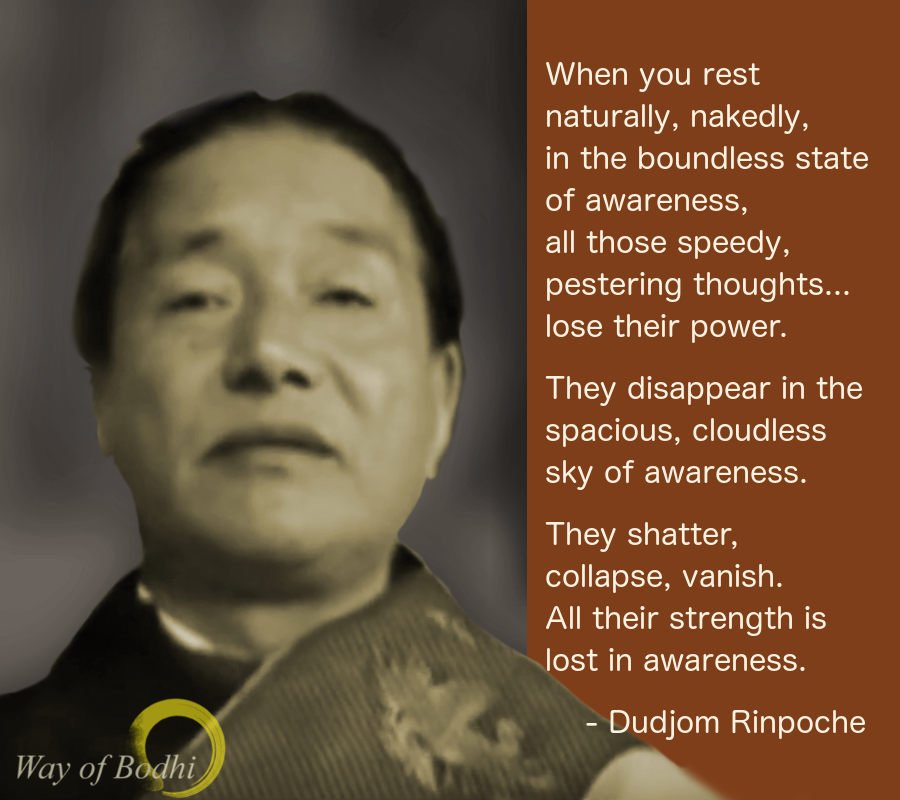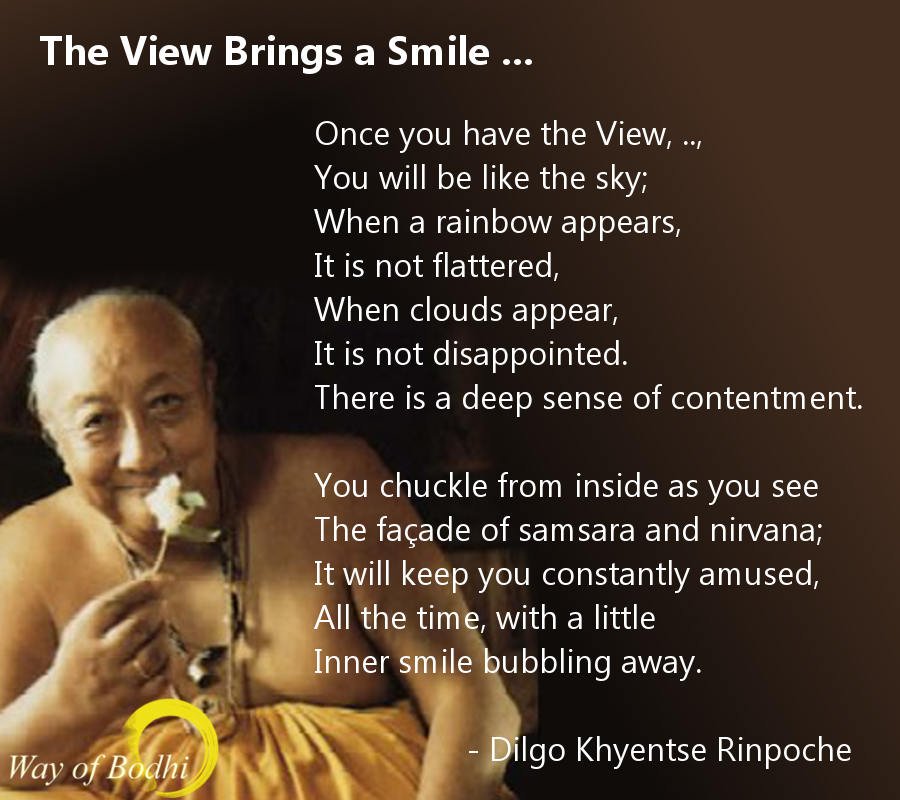Natural Meditation

When you rest quite naturally, nakedly, in the boundless state of awareness, all those speedy, pestering thoughts that would not stay quiet even for an instant – all those memories, all those plans that cause you so much trouble – lose their power. They disappear in the spacious, cloudless sky of awareness. They shatter, collapse, vanish. All their strength is lost in awareness.
-Kyabje Dudjom Rinpoche in “Counsels from my Heart”
Though there are many ways to meditate, ultimately meditation means to familiarize with the recognition of the nature of one’s own awareness – the space-like boundless expanse of luminous clarity. As you relax in that vast expanse, and effortlessly maintain an unceasing flow of that recognition, whatever thoughts, emotions and myriad perceptions arise are just like the waves of an ocean of awareness. They arise and vanish in the vast expanse of awareness and even for a moment, do not part from their true nature. Everything, even a so called distracting thought, is nothing but the vibrancy and play of that empty-cognizance.
Further, Vidyadhara Jigme LIngpa, the yogi of sky-like vast expanse (Longchen Namkhai Naljorp), an accomplished yogi of Tibet wrote,
This very wakeful awareness, unimpaired and uncorrupted! Do not restrict it with effortful meditation and philosophical clinging. Take this free-flowing open transparent awareness directly as the path.
In the practice of Dzogpa Chenpo (Dzogchen / Great Perfection / Mahasandhi-yoga), an accomplished Guru directly introduce the disciple to this naturally perfect and spaciously open awareness (rigpa). Unlike other systems of Buddhist meditation, in Dzogchen the practitioner just leaves the naturally wakeful awareness as it is, with its natural all pervasive mindfulness without putting any additional effort. There are no applications of antidotes as in other systems of meditation, and there is no clinging to philosophical views. The view of this practice is the direct recognition of empty-cognizance as introduced by the Guru. When various thoughts arise, they are neither blocked nor followed after. They are simply recognized as the radiance of empty-cognizance.

Once the disciple recognizes and familiarizes with this, thoughts, emotions and perceptions lose their power to fool him or her. They come and go quite naturally and ephemerally, without having any strength to coagulate as something harmful or disturbing. Since there is no more hallucination about their reality, they don’t have the power to take us on a long trip.
Usually, thoughts and emotions sustain on the fuel of our attention. We get caught up in the mistaken idea that they are something real and solid. In this way, the very radiance of our own pristine awareness becomes a chain of delusion. Now, in the absence of that fuel, whatever arises — thoughts, emotions, distractions, perceptions etc — liberate in their own space. They vanish as they arise and do not sustain as traps.
When this is understood, meditation is just a matter of knowing how to relax into one’s own true nature. In Dudjom Rinpoche’s words (from the same text),
Meditation means becoming familiar with the state of resting in the primordially uncontrived nature, through being spontaneously, naturally, constantly mindful. It means getting used to leaving the state of awareness alone, divested of all distractions and clinging.
 There is a vast difference between simply resting in a drowsy or thoughtless state of absorption of mind and resting in the natural openness and vibrancy of the primordially uncontrived nature of mind. The former is merely a state of withdrawal into a relatively inactive state. Whereas, the latter is a state of natural perfection — where clarity, mindfulness, alertness, vibrancy, responsiveness, etc., are all naturally at their best without any effort. Further, the view of that primordially pure nature also brings great evenness and contentment, even while facing various situations in this world. In Kyabje Dilgo Khyentse Rinpoche’s words,
There is a vast difference between simply resting in a drowsy or thoughtless state of absorption of mind and resting in the natural openness and vibrancy of the primordially uncontrived nature of mind. The former is merely a state of withdrawal into a relatively inactive state. Whereas, the latter is a state of natural perfection — where clarity, mindfulness, alertness, vibrancy, responsiveness, etc., are all naturally at their best without any effort. Further, the view of that primordially pure nature also brings great evenness and contentment, even while facing various situations in this world. In Kyabje Dilgo Khyentse Rinpoche’s words,
Once you have the View, although the delusory perceptions of samsara may arise in your mind, you will be like the sky; when a rainbow appears in front of it, it is not particularly flattered, and when the clouds appear, it is not particularly disappointed either. There is a deep sense of contentment. You chuckle from inside as you see the facade of samsara and nirvana; the View will keep you constantly amused, with a little inner smile bubbling away all the time.
 In the system of Dzogpa Chenpo (Dzogchen, Great Perfection or Mahasandhi yoga), an accomplished Guru introduces a disciple to this natural, primordial and spontaneous perfection at a suitable stage during one’s training. That introduction leads to the practice of Dzogchen as the natural union of shamatha (calm abiding) and vipashyana (special insight).
In the system of Dzogpa Chenpo (Dzogchen, Great Perfection or Mahasandhi yoga), an accomplished Guru introduces a disciple to this natural, primordial and spontaneous perfection at a suitable stage during one’s training. That introduction leads to the practice of Dzogchen as the natural union of shamatha (calm abiding) and vipashyana (special insight).
Till that point, there is a way of training on shamatha (clam-abiding) to familiarize with one’s own awareness. In Kyabje Dudjom Rinpoche’s words (from the same text),
When thoughts come while you are meditating, let them come; there is no need to regard them as your enemies. When they arise, relax in their arising. On the other hand if they don’t arise, don’t be nervously wondering whether or not they will. Just rest in their absence. If big well-defined thoughts suddenly appear during your meditation, it is easy to recognize them. But when slight, subtle movements occurs, it is hard to realize that they are there until much later. This is what we call namtok wagyu, the undercurrent of mental wandering. This is the thief of your meditation, so it is important for you to keep a close watch. If you can be constantly mindful, both in meditation and afterward when you are eating, sleeping, walking, or sitting, that’s it – you’ve got it right!
- Turning of the Wheel of Dharma - November 26, 2024
- Compassion – The Profound Stirring That Overcomes Passivity - November 21, 2024
- This Moment – The Delight in this Day of Excellence - June 6, 2021


“When you rest quite naturally, nakedly, in the boundless state of awareness, all those speedy, pestering thoughts that would not stay quiet even for an instant – all those memories, all those plans that cause you so much trouble – lose their power. They disappear in the spacious, cloudless sky of awareness. They shatter, collapse, vanish. All their strength is lost in awareness.”
This is such a clear pointing out instruction, directly pointing to that empty luminosity within which all arises and ceases. Yet it itself remains beyond time and beyond location, untouched and untarnished by all those illusory appearances.
How wonderful!